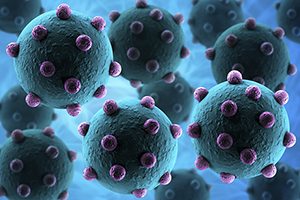“Breast cancer is a leading cause of death for women, with mortality resulting from metastasis. Metastases are often detected once tumour cells affect the function of solid organs, with a high disease burden limiting effective treatment.”
Cancer Research UK statistics show nine in 10 cancer deaths are caused by the disease spreading elsewhere in the body.
This device, currently being tested in mice, is being heralded as the newest weapon in the ongoing battle against breast cancer.
It is hoped that the device will assist doctors in determining whether a cancer is spreading, before it is too late
The sponge-like device, or ‘super attractor’ is being developed by US researchers in the hope to stop rogue cancer cells reaching new areas where tumours could potentially grow.
The study, appearing in medical journal Nature Communications, charts the results of implanting a device about 5mm in diameter, made of “biomaterial”, into mice with breast cancer.
The device is implanted in abdominal fat or under the skin and has been proven to absorb cancer cells that have already started to circulate around the body.
Findings from the University of Michigan showed that the device slowed the spread of cancer cells to the lungs by 88% compared to mice without the implant.
Study author, Jacqueline Jeruss said the implant was conceived because of the understanding that cancer cells do not spread randomly – they tend to focus in on specific areas. This theory allowed the team to refocus their attention to combating this trait.
“We set out to create a sort of decoy – a device thats more attractive to cancer cells than other parts of the patient’s body. it acts as a canary in the coal mine. And by attracting cancer cells, it steers those cells away from vital organs,” said Lonnie Shea, co-author of the study.
When the device was implanted into the mice, their immune systems responded as normal – sending cells to attack the foreign object. The device’s tiny pores then acted as a sponge, soaking up the cancer cells that were attracted to the new influx of immune cells.
“We were frankly surprised to see that cancer cells appeared to stop growing when they reached the implant. We saw individual cells in the implant, not a mass of cells as you would see in a tumour, and we didn’t see any evidence of damage to surrounding tissue,” said Shea.
While the study will continue for a number of years, it is hoped the final product will be able to be inserted into breast cancer patients, allowing doctors to monitor it using a scan, then detect and treat any signs of relapse immediately.
The authors are hopeful that the device will be able to be used on patients with other types of cancer.
“A detailed understanding of why cancer cells are attracted to certain areas in the body opens up all sorts of therapeutic and diagnostic possibilities,” Shea said. “Maybe there’s something we can do to interrupt that attraction and prevent cancer from colonising an organ in the first place.”







